Events

- This event has passed.
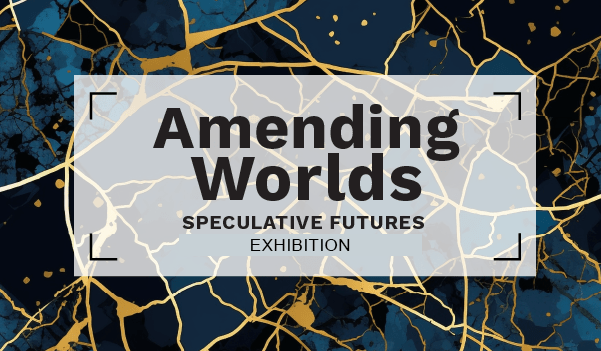
Amending Worlds: Projects from the Coha-Gunderson Creativity Workshop
June 5 | Santa Cruz Museum of Art & History
The Coha-Gunderson Creativity Workshop, housed in The Humanities Institute at UC Santa Cruz, presents a multi-media exhibition by UCSC graduate and undergraduate students and alumni winners of the Coha-Gunderson Prize in Speculative Futures. The Amending Worlds exhibition includes installations, performances, visual art, film & video, and a computer game, distributed throughout the museum’s spaces. Prizewinners come from a range of disciplines, including Anthropology, Art, Computational Media, Environmental Art and Social Practice, Film and Digital Media, Literature, and Politics.
The Coha-Gunderson Prize in Speculative Futures prize was established by THI’s Speculatively Scientific Fictions of the Future project and is made possible by alumni Peter Coha (Kresge ’78, Mathematics) and James Gunderson (Rachel Carson ’77, Philosophy, and UCSC Foundation Board Trustee).
The exhibition opens on June 5th, 2025 and runs until June 15th, 2025. The exhibition launches in conjunction with The Humanities Institute’s Night at the Museum event, which will also feature a panel discussion about speculative fiction to engage scholars, practitioners and publics in creative speculation with and about the works.
Exhibition Projects:
Shades of Fake Green Grass, Hannah Barrett
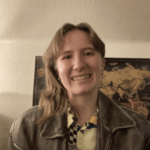 Shades of Fake Green Grass is a collection of short stories that focus on the day-to-day lives of ordinary people, and their ordinary problems, through a technologically dystopian lens.
Shades of Fake Green Grass is a collection of short stories that focus on the day-to-day lives of ordinary people, and their ordinary problems, through a technologically dystopian lens.
Hannah Barrett is a writer with a current focus on science fiction. She aims to compel readers toward internal dialogues that teach us how to better engage with the world.
a portal, Yasmine Benabdallah
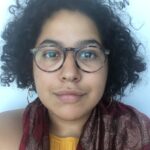 a portal includes a video installation and a micro-chapbook, part of a project linking Brazil, Morocco, and Portugal through a shared history of colonization, enslavement, and a forced exodus across the Atlantic. a portal explores memory, archives, and non-linear time, and foregrounds our bodies’ resonances through time and space, calling on them to erode, wash over, and imagine liberatory futures.
a portal includes a video installation and a micro-chapbook, part of a project linking Brazil, Morocco, and Portugal through a shared history of colonization, enslavement, and a forced exodus across the Atlantic. a portal explores memory, archives, and non-linear time, and foregrounds our bodies’ resonances through time and space, calling on them to erode, wash over, and imagine liberatory futures.
Yasmine Benabdallah is a Moroccan filmmaker and visual artist whose work explores memory, performance, diaspora, archives, rituals, and time travel.
Whispers of Wear, Kristine Buriel
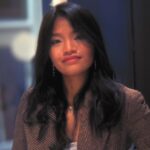 The Selveger Collective gets its name from a portmanteau of “selvage”- a stitched edge that prevents a fabric from unraveling and “salvager”- those who prevent something from being lost. Walk into the archives and don the clothes of wearers’ past and hear the stories weaved into the threads. Scan to gain insight from those whose hands touched the cloth.
The Selveger Collective gets its name from a portmanteau of “selvage”- a stitched edge that prevents a fabric from unraveling and “salvager”- those who prevent something from being lost. Walk into the archives and don the clothes of wearers’ past and hear the stories weaved into the threads. Scan to gain insight from those whose hands touched the cloth.
Kristine Buriel is an interdisciplinary artist focused on making and craft. She uses technology to preserve the process and human story so that it can be shared and not forgotten.
Night Lights for Squid, Chaelim Lim
 Squid are said to be attracted to light. Powerful lights are used during the night for squid fishing. However, scientists aren’t able to explain why some squid hide away from the lights, under the shadows of the vessel. Are the lights overwhelming for squid individuals? What if squid could create their own night lights? What stories would these lights tell?
Squid are said to be attracted to light. Powerful lights are used during the night for squid fishing. However, scientists aren’t able to explain why some squid hide away from the lights, under the shadows of the vessel. Are the lights overwhelming for squid individuals? What if squid could create their own night lights? What stories would these lights tell?
Chaelim Lim is an artist based in Seoul who researches disaster investigation in a fictional manner. She explores architecture that amplifies the gestures of more-than-human beings in disaster discourse.
A Martian Manifesto, Jorge Antonio Palacios
 A Martian Manifesto is a text and series of installations experimenting with craft and new media to create outdoor social sculptures. Through re-enacting speculative practices of the deep future and on Mars, this process-oriented work is metabolized into a manifesto of science fiction, gesturing towards alternative ways of being with each other, technology, and the world.
A Martian Manifesto is a text and series of installations experimenting with craft and new media to create outdoor social sculptures. Through re-enacting speculative practices of the deep future and on Mars, this process-oriented work is metabolized into a manifesto of science fiction, gesturing towards alternative ways of being with each other, technology, and the world.
Jorge Antonio Palacios is an artist from Yanawana/San Antonio, Texas. They use foraging, digital media, writing, and installation as methodologies for investigating relationships between land, technology, displacement, and decolonization.
The Third Person, Rowan Powell
 The Third Person, taken from the writing of the Diggers in 1649, refers to someone who relates to land without private ownership. Drawing on this idea, the work stages a hypothetical conversation between ‘ravers’ and ‘ranters,’ old and new. Through exchanges of soil, wood, linen, repurposed texts and symbols, the installation journeys through political romanticism– hope and dissolution expressed through squatting, trespassing, free parties and intentional communities.
The Third Person, taken from the writing of the Diggers in 1649, refers to someone who relates to land without private ownership. Drawing on this idea, the work stages a hypothetical conversation between ‘ravers’ and ‘ranters,’ old and new. Through exchanges of soil, wood, linen, repurposed texts and symbols, the installation journeys through political romanticism– hope and dissolution expressed through squatting, trespassing, free parties and intentional communities.
Rowan Powell is a writer and researcher currently working with trees, chickens, film, and dancing. Their research draws on place(s), tracing attempts at reaching to what is buried.
olam ha-ba (the world to come), Tyler Rai
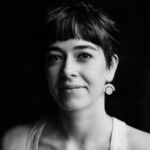 This project is a growing conversation between Palestinian and Lebanese heirloom seeds, the soils of coastal California, and communities of seed savers. Through these seeds in exile, the project explores how heirloom seeds encompass entire cosmologies and ancestral technologies for resistance, hope, and birthing the world to come.
This project is a growing conversation between Palestinian and Lebanese heirloom seeds, the soils of coastal California, and communities of seed savers. Through these seeds in exile, the project explores how heirloom seeds encompass entire cosmologies and ancestral technologies for resistance, hope, and birthing the world to come.
Tyler Rai is a transdisciplinary artist whose work investigates cultural inheritance, ecological entanglements and solidarity work as a form of ancestral memory. She collaborates with seeds, stones, bodies, and soils.
Sea of Paint, Hongwei Zhou
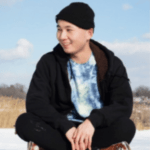 Sea of Paint is a narrative-driven video game that explores the issues around contemporary machine learning-based AI technology. The player engages in dialogue with a “spirit” conjured from the Sea — an ever-recording flow of data. The game asks how our ideas of memory, labor and care are brought into tension with the prevalence of data-driven AI.
Sea of Paint is a narrative-driven video game that explores the issues around contemporary machine learning-based AI technology. The player engages in dialogue with a “spirit” conjured from the Sea — an ever-recording flow of data. The game asks how our ideas of memory, labor and care are brought into tension with the prevalence of data-driven AI.
Hongwei Zhou is a video game educator and researcher. He is interested in thinking about the entanglement of game systems and technoculture.
Support Team:
Matt Polzin
GSR for the Coha-Gunderson Creativity Workshop
Matt Polzin is a fiction writer and researcher whose work focuses on queer utopia, interspecies relationships, and the Midwest.
Valerie Sainz
2024-25 Humanities EXPLORE Fellow, The Coha-Gunderson Exhibition and the Santa Cruz Museum of Art & History
Valerie Sainz is a History and History of Art & Visual Culture major (Museums, Heritage, and Curation concentration).
Carla Freccero
PI, The Coha-Gunderson Prize in Speculative Futures; Coordinator, The Coha-Gunderson Creativity Workshop
Carla Freccero is Distinguished Professor of Literature & History of Consciousness, UCSC.
– Special thanks –
- Peter Coha (Kresge College ’78, Mathematics) and James Gunderson (Rachel Carson College ’77, Philosophy and UCSC Foundation Board Trustee)
- Matt Polzin, Graduate Student Researcher
- Valerie Sainz, EXPLORE Fellow
- The Santa Cruz Museum of Art & History (Marla Novo, Deputy Director; Natalie Jenkins, Exhibitions Manager; Shanti Nagwani, preparator)
- The Humanities Institute (Pranav Anand, Faculty Director; Irena Polic, Managing Director; Saskia Nauenberg Dunkell, Research Programs & Communications Director; Jessica Guild, Event and Operations Manager)
- UCSC Faculty Guests: Micah Perks (Literature); Alison Laurie Palmer (Art); Claudio Bueno (Art); Soraya Murray (History of Art & Visual Culture); Maria Puig del la Bellacasa (History of Consciousness)
